“No officer in this regiment now doubts that the key to the successful prosecution of this war lies in the unlimited employment of black troops. Their superiority lies simply in the fact that they know the country, while white troops do not, and that they have peculiarities of temperament, position, and motive, which belong to them, alone. Instead of leaving their homes and families to fight they are fighting for their homes and families, and they show the resolution and sagacity which a personal purpose gives.”[1]
Approximately 180,000 African-Americans, comprising One Hundred sixty-three units, served in the Union Army during the Civil War, and many more served in the Union Navy. Native Americans served in the United States Colored Troops (USCT), while some, mainly in the south, fought for the Confederates. Black Indians, served in colored regiments with other African American and Native American soldiers.[2]
After the Civil War, many USCT veterans struggled for recognition and had difficulty obtaining the pensions rightful to them. The Federal government did not address the inequality until 1890 and many of the veterans did not receive service and disability pensions until the early 1900’s. My ancestors, Henry Green and Uriah Martin, applied for Pensions, and left documents of their lives before and after the Civil War. When it came to Henry Green, and Uriah Martin, my mother told us they came from the Welsh Mountains. She passed down what she was told, and we did not doubt that what she said was true. The census records and documents on our ancestors, are proof that her version was correct. She stated that, Uriah Martin’s brother, William Penn Martin settled in California after the Civil War.
I found information on a William Martin in Yolo County California, who was born in Pennsylvania. He fit the profile somewhat but I have not proved him to my satisfaction. I was thrown off by the racial designation of white on the 1870 census. There was another William Martin at Michigan Bar, in Sacramento, and he too was from Pennsylvania, and is listed as white. Great Uncle William Martin’s trail in California has grown cold, and remains a mystery to our family.
The Martin and Green men, lived closer to the land then Walter Samuel, and were a little more rugged. Henry Green had tattoos of Anchors on both forearms, a fact that was mentioned in his Civil War Records. They were remnants of the Natives, Free Blacks, and whites, who lived in and around the Welsh Mountains. The Welsh Mountain is a Community, which cuts through Lancaster and Chester County in Southeastern Pennsylvania. The Mountains were a place of refuge for escaped slaves, free blacks, and Natives avoiding deportation to reservations. Many of the whites who fled into the mountains were criminals, or running from Indentured Servitude. During Pennsylvania’s slave period, African slaves and indentured whites both sought freedom in the Mountains. They soon made up a rugged group, now known as, Tri-Racial Isolates.
My mother passed the history of our ancestors through stories she told, when we were children. It was a means of keeping us occupied during the cold Pennsylvania Winters. She spoke of the Civil War and our ancestors who were part of the Colored Troops. We learned about the Civil War in History Class, and looked through the books, for mention of the Colored Troop. There was no mention of them in the history books, nor in the books in our library. I knew that my mother would not make up tales about the family. It was not until 1983 that I ordered copies of Uriah Martin and Henry Greens Civil War Records. My mother and I poured over those records to glean information.
The Green and Martin families, were descendants of those rugged mountain folks, but lived in both worlds. They would come down and work on area farms and then head back to the mountains. In later years, the young people came down, married, and/or joined the Military. My Grandfather Martin was the last of our line to live in the Mountains. I remember going up there and seeing the haze over the trees. It was absolutely beautiful, and breathtaking, something that is hard to find words to describe. There were cases of people who wandered in the Welsh Mountains told Harrowing tales, of seeing Ghost like figures, and being shot at. There are even stories about people going in the Mountains and disappearing without a trace. These days there are only a few descendants, of the original people left on the Mountain. Developers have swept in, building upscale homes for Middle Class Families.
The Underground Railroad Colored Soldiers and the Welsh Mountains
My mother spoke about our Welsh Mountain ancestors, having been under the protection of William Penn. Her Paternal grandfather was named William Penn Martin, after his fathers brother, William Penn Martin Senior. They and their ancestors, considered themselves, “Penn’s Indians”, even after the land was taken, and most Natives were shipped to Reservations out west. They were the Conestoga and Susquehanna who lived along the Rivers and Creeks in Chester and Lancaster County.
The area where they hunted, and fished, was also part of the Underground Railroad, which led from Southern States like, Virginia and Maryland to points north. The Underground Railroad had many stops throughout Southeastern Pennsylvania, because of it’s proximity to the south. My Great-Great Grandfather, Robert Pinn, was one of the unsung heroes of the Underground Railroad. He and his family were free blacks living in Virginia, until 1853, when the fled to Columbia (Lancaster County), Pennsylvania. He was a vocal Baptist Minister in Virginia and continued to Minister in Columbia, until he was forced to flee to Burlington New Jersey. Robert Pinn was from a long line of Virginia’s Free Colored Population. His grandfather, Rawley Pinn was a Revolutionary War Soldier, who fought at The Siege of Yorktown. His wife, Elizabeth Jackson-Pinn, was also a descendant of Free Persons of Color, and her grandfather, Charles Lewis was a Sailor and Soldier during the Revolutionary War.
Their son, and my Great Uncle, Walter Samuel Pinn, was a Corporal with the, 54th Massachusetts USCT, Company B. Also serving in the Unit were the sons of Frederick , Charles and Louis. Walter Samuel Pinn was the brother of my Maternal Grandmother Leah’ Ruth-Martin’s Mother. While in training, Colonial Robert Shaw promoted him to Corporal. Walter Samuel’s father, Reverend Robert A. Pinn, was a Minister in Virginia, and fled with his family, to Columbia Pennsylvania in 1853.
Prior to signing with the 54th Massachusetts, Walter Samuel was a Barber in Columbia, Pennsylvania, and lived a comfortable life. He wrote letters from the Battlefield to his parents and siblings, detailing his life on the Battlefield. Through his letters, he introduced his oldest sister Katherine to her husband, James McPherson. Their unit picked up a slave boy, named Samuel Ruth, in Savannah Georgia and left him with his parents, who lived in, Burlington New Jersey. That slave boy, Samuel Ruth, married Walter Samuel’s youngest sister, Maria Louisa Pinn. The couple settled in Erculdon Pennsylvania (a part of Coatesville), and are my Maternal Grandmother Leah Ruth-Martins’ parents. After the Civil War, he returned to Virginia with his mother and younger siblings, where he died of consumption at the age of twenty-two. He did not marry, nor have any children, but his deeds speaks volumes

The Green Brothers Henry and Benjamin
The four soldiers profiled here are, Benjamin Green (Private 25th USCT, Co. B), his brother Henry Green, (Private 41st, USCT, Company B); Uriah Martin, (Corporal 41st, USCT, Company B), and his brother, William Martin, Private 45th, USCT, Company K). Uriah and William Martin were born in Chester County, to Charles and Sarah Johnson-Martin. Benjamin and Henry Green, a Mulatto, and were the son of Benjamin (a Mulatto), and Sarah (White), Green, who were listed in the 1850 census for Lancaster County. Benjamin Green Junior was named after his father. In 1850 Benjamin and Sarah Green were living in Colerain Township, while Henry and his brother Benjamin were living in Salisbury Township. Charles Martin, and his children, Philenah (19), William (17), and Uriah (15), and are listed as Mulatto.
Henry is listed as Mulatto in the 1850 census, and living in Salisbury Township, and by 1864, he is listed as black, living in the same residence. He was born about 1832, and lived in and around Lancaster County most of his life. In 1864, he was described as thirty-four years of age, 5’11 1/2″ tall, Black, and having tattoos of Anchors on both forearms. His second wife (of three), was named Susan Green, and that caused some confusion in my research. Susan’s parents were George and Lydia Davis-Green, and both are listed as being born in Delaware. It appears that Lydia Davis-Green, left Delaware after the death of her husband, and lived with relatives in Chester County. There does not appear to be a blood relationship between the two Green families.
When Grandfather Martin was a child, he spent summers in the Mountains with Henry Green and his cousins. Henry’s parents, Benjamin and Sarah Green are listed in the 1850 Census for Colerain Township in Lancaster County. In 1850, Henry’s father (Benjamin Sr.), was listed as sixty-years old and Mulatto, and his mother (Sarah), was listed as forty-four years old and white. The ages fit, because Henry was twenty-two years old in 1850, and lived in near his brother, Benjamin. He lived near Sadsbury Township, the site of the 1851 Christiana Resistance. The Christiana Resistance took place on September 11, 1851. Many Historians believe the event was a precursor to the Civil War.
On that day, a slave owner, Edward Gorsuch, his son Dickinson, a Federal Marshall, and Posse showed up at the door of William Parker. The slave owner was there to demand the return of his property. Henry begged to differ about whether another human being could be someone’s, “Property.” On that day, the argument between Edward Gorsuch and William Parker turned deadly. In the midst of the argument, Parker shot Gorsuch in the chest and he fell to the ground dead. By the law, Gorsuch had every right to be there, after all slavery was legal. The Fugitive Slave Act, or the Compromise of 1850, was the law on that date, was used to justify apprehending escaped slaves in northern states.
God’s Law bound the Abolitionist and others, who believed every man, should be free. Passage of; The Fugitive Slave Law, gave authority to power Federal Authorities, to assist in capturing escaped slaves. While Gorsuch and Parker argued, Elizabeth Parker blew a French Horn out of the Attic window, summoning the locals to their home. Their were numerous of Underground Railroad Safe Houses and Conductors, on any given day. The house that William Parker occupied contained escaped slaves, whose safety was in jeopardy. The Parker family, and others in the community, had vowed to protect the slaves with their lives, or the lives of others.
“Immediately following the confrontation at Christiana, William Parker, Abraham Johnston, and Alexander Pinckney took flight. They were helped along the Underground Railroad to Canada and came to the Buxton Settlement. Eliza Parker and Hannah Pinckney remained and were arrested for treason. They were eventually released and were assisted by the Underground Railroad in their journey to join their husbands in Buxton.
Both William Parker and Abraham Johnston purchased land in the Buxton Settlement. William Parker attended night classes at the Buxton School and was elected to the Raleigh Township Council. Descendants of William and Eliza Parker continue to live in the Buxton area today. Abraham Johnston’s farm has been in the hands of the Johnston family since that time and is now owned by a direct descendant who continues to live there. Alexander Pinckney served with the 54th Massachusetts during the Civil War. Following the war he moved to Grand Rapids Michigan.”[3]
The day after Gorsuch was killed, thirty-eight participants of the event were arrested, including Henry Green. The group stood trial in Philadelphia, but was found not guilty, of all charges. Some Historians believe the Christiana Resistance, to be a precursor to the Civil War. Little is heard from Henry Green from that time until he signed on with the 41st USCT in 1864. When the Civil War, He was thirty-two years of age, married and living in Salisbury Township. As a Farm laborer, he worked on farms in Chester and Lancaster County. He and Uriah also worked in the Quarry Mines, a job that was one of the most labor intensive in the area. After the Civil War, he returned home with his wife and their children, and sometime between then and 1880, they separated. By 1880, he was in Lancaster County with his third wife, Caroline Harris, and their children. The family lived at the foot of the Welsh Mountains in an area called, Mt. Airy.
There is not a lot of information on Benjamin Green, but he appears to have lived a quiet life. He was older then Henry Green his wife’s name was Catherine, (according to the 1850 census), and living in Salisbury Township, where they are listed as Mulatto. His age is listed as twenty-five and Catherine as twenty-four, and they are the parents of four children, William (6), Henry (4), Benjamin (3), and Samuel (1).
William and Uriah Martin: Brothers and Soldiers
Documents from the Bureau of Pensions states that, Uriah Martin married Tamyzine Ann Page at Atglen, Chester County, on July 18, 1860. She was his first and only wife, and is listed as Mulatto (on census records). She is one of our ancestors who my mother described as, “Indian”, coming from the Mohawk Tribe. Great Grandfather, William Penn Martin (b. 1862), was their oldest child. Besides William they had children; including Harry (b. 1864), Philena (b. 1866), Susanna (b. 1869), Ida May (b. 1875), Horace (b. 1873), Ida Mae (b. 1875), Jacob (b. 1875), Lou Bertha (b. 1882), Rachel (b.1883), Blanche Belle ( b. 1886), and Rachel (b. 1883). The children’s names are recorded on Uriah Martin’s Pension Application.
The family Bible, lists the birth date of Uriah as 11th of 8th mo., 1835 (August 11, 1835). The older of the two, William was two years older, and would have been born around 1833. The oldest of the siblings were a sister named, Philena, who was born about 1830. The family is listed in the 1850 census for Colerain Township, in Lancaster County Pennsylvania. In the 1840 census, Charles Martin is living in Upper Oxford Township, in Chester County, with a wife (Sarah Johnson-Martin), three males under ten, one male twenty-four to thirty, one female under ten, and one female twenty-four to thirty-six.
Although the children were born in Chester County, the family moved between Lancaster and Chester County. The mother Sarah died prior to 1850, and by 1860, Charles was remarried. Charles and his new wife Susan, had children James, (3) and Mary (9 months), according to the census for Sadsbury Township. Susan Martin and the children are listed as Mulatto, while Charles and Uriah are listed as Black. William, who was living with the family in 1850, has moved out by 1860. In the 1860 census for Sadsbury, Lancaster County, Uriah a twenty five year old, is living with his father, stepmother, (Susan), and half siblings. Williams’ Service Records give his place of residence as Lancaster County
The Civil War and the United States Colored Troops
On July 17, 1862, Congress passed two acts allowing the enlistment of African-Americans, but official enrollment occurred only after the September 1862 issuance of the Emancipation Proclamation. The Proclamation paved the way for black soldiers to fight for the Union, by that time they were desperately needed. It also tied the issue of slavery directly to the war. In general, white soldiers and officers believed that black men lacked the courage to fight and fight well. By August 1863, fourteen Negro Regiments were in the field and ready for service. At the battle of Port Hudson, Louisiana, May 27, 1863, the African-American soldiers bravely advanced over open ground in the face of deadly artillery fire. Although the attack failed, the black solders proved their capability to withstand the heat of battle. The Soldiers served in the United States Colored Troops (USCT), which came into existence after the Emancipation Proclamation.
Uriah Martin and Henry Green served with the 41st USCT, Company B, Benjamin Green served with the 25th Regiment USCT, Company F, and William Martin served with the 45th USCT, Company K. All trained at Camp William Penn, which is located in Chester County, before heading to the Battlefields, with their units. After Training, Uriah received a promotion to Corporal, while Benjamin, William and Henry remained privates. The regiments participated in Battles through out the territories.
In the Case of the 25th USCT Regiment:
“Organized at Philadelphia, Pa., January 3 to February 12, 1864. Sailed for New Orleans, La., on Steamer “Suwahnee” March 15, 1864 (Right Wing). Vessel sprung a leak off Hatteras and put into harbor at Beaufort, N. C. Duty there in the defenses, under Gen. Wessells, until April, then proceeded to New Orleans, arriving May 1. Left Wing in camp at Carrollton. Attached to Defenses of New Orleans, La., Dept. of the Gulf, May to July, 1864. District of Pensacola, Fla, Dept. of the Gulf, to October 1864. 1st Brigade, 3rd Division, U.S. Colored Troops, Dept. Gulf, October, 1864. 1st Brigade, District of West Florida, to January, 1865. 3rd Brigade, 1st Division, U. S. Colored Troops, District of West Florida, to February, 1865. 1st Brigade, 1st Division, U.S. Colored Troops, District of West Florida, to April, 1865. Unattached, District of West Florida, to July, 1865. Dept. of Florida, to December, 1865.”[4]
In the Case of the 41st USCT Regiment:
The troops composing this regiment were from different sections of the State, and rendezvoused at Camp William Penn, where a regimental organization was effected in the fall of 1864.
On the 13th of October, six companies, all that were at that time full, were ordered to join the Army of the James, and proceeded to Deep Bottom, where, for a few days, they performed guard duty, and then moved up to the front in rear of Fort Burnham. On the 27th, they took part in a reconnaissance in force on the right of the Army of the James, in the vicinity of the Darby-town Road, and had one, a Sergeant, wounded. This movement was undertaken as a diversion in favor of Hancock, who was moving upon the Boynton Plank Road, on the extreme left of the Army of the Potomac.
On the 1st of January, 1865, the regiment moved to the vicinity of Fort Durham, exchanging camps with the One Hundred and Seventeenth Colored, where it continued in drill and picket duty. On March 27th, in connection with the Twenty-fourth Corps, under command of General Ord, to the Second Division of which it now belonged, it moved to join the Army of the Potomac, arriving at Hatcher’s Run on the 29th. It was immediately ordered upon the front, where it threw up breastworks and skirmished with the enemy.”
After Confederate General Robert E. Lee surrendered at Appomattox on April 9, 1865, the 41st USCT regiment was sent to Texas. The regiment was stationed there until the men were mustered out of service at Brownsville, Texas, on November 10, 1865.[5]
The 45th United States Colored Troops:
“During the Mobile campaign, which was inaugurated in January, 1865, it was ordered to report to General Pile, for immediate service in the field, it being the purpose of the Government to organize an entire division of colored troops. It was here associated with the “Old New Orleans First,” composed principally of Creoles of wealth and standing. However, before arrangements had been perfected for taking the field, the enemy threatened a counter movement against Pensacola, and it became necessary to strengthen the defenses, and put the forts in a condition to withstand the siege. It was accordingly deemed inexpedient to relieve the Twenty-fifth, for a regiment inexperienced and undrilled in garrison duty, and hence it did not take part in the active operations in the field, which were soon after inaugurated.”[6]
Some Activities of the 24th USCT Regiment:
“On the 27th of March [1864], in connection with the 24th Regiment, under command of General Ord, to the Second Division of which it now belonged, it move to join the Army of the Potomac, arriving at Hatcher’s Run on the 29th. It was immediately ordered upon the front, where it threw up breastworks and skirmished with the enemy. On the 2nd of April, it was engaged before Petersburg, losing one killed and eight wounded, and at evening moved in pursuit of the rebel army, following the line of the South Side Railroad. The pursuit was pushed with little interruption until the regiment reached Appomattox Court House, where, on the 9th, while upon the skirmish line, Captain John W Falconer was mortally wounded, dying on the 23d.”[7]
If there ever were a, “Just War”, it would be the Civil War. Although there may be debates on the reasoning behind the War, there was little doubt in the minds of the Soldiers of the United States Colored Troops. They left family, friends, and community to fight for those in bondage, and for their own freedom. Although they proved themselves as reputable soldiers, discrimination in pay and other areas remained widespread. According to the Militia Act of 1862, soldiers of African descent were to receive $10.00 a month, plus a clothing allowance of $3.50. Many regiments struggled for equal pay, some refusing any money until June 15, 1864, when Congress granted equal pay for all black soldiers.
It is with great pride that I write about my ancestors, who were Soldiers in the United States Colored Troops.
This is their Roll Call:
1. Corporal Walter Samuel Pinn, 54th Massachusetts United States Colored Troops, Company B;
2. Corporal Uriah Martin, 41st United States Colored Troops, Company B (Lancaster County Pennsylvania),
3. Private William Martin, 45th United States Colored Troops, Company K (Lancaster County Pennsylvania);
4. Private Henry Green, 41st United States Colored Troops, Company B (Lancaster County Pennsylvania);
5.Private Samuel Green, Private 41st Regiment, United States Colored Troops, Company B, (Lancaster County Pennsylvania)
6. Private Benjamin Green, 25th Regiment United States Colored Troops, Company B, (Lancaster County Pennsylvania)
May this not be their last Roll Call. We are the voice of our ancestors, but not the only voices. The descendants of these soldiers continue to live in the Region and throughout the world. Some are themselves soldiers wearing the uniform of our Country proudly. We give thanks to Pennsylvania for honoring our Ancestors, and recognizing the diverse groups of Soldiers who fought during the “War Between the States.”


 |
 |
[1] Higginson, T.W., Colonel, Commander of the First Regiment South Carolina Volunteers (Union), Excerpt from report given by Colonial Higginson, February 1, 1863
[2] Hauptman, Laurence M., Between Two Fires: American Indians in the Civil War. New York. The Free Press (Simon and Schuster), 1995
[3] Buxton Christians Resistance the Canada Connection, http://www.millersville.edu/~ugrr/tellingstories/demosite/Buxton/resistance/christiana_resist_panel.html
[4] Bates, Samuel P. History of the Pennsylvania volunteers, 1861-1865, Harrisburg, 1868-1871
[5] ibid
[6] Ibid
[7] ibid

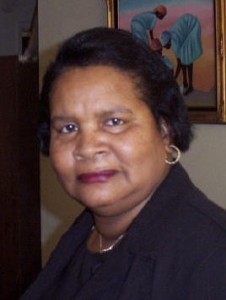

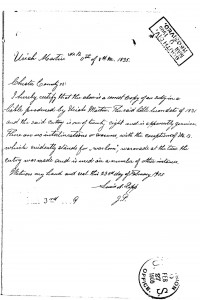
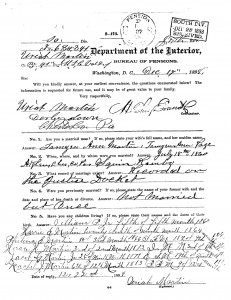


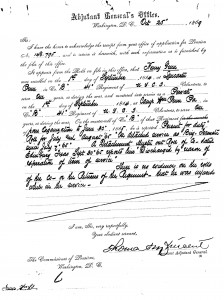
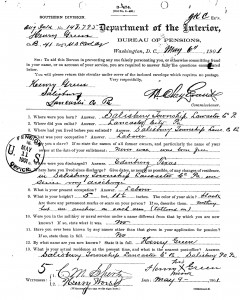

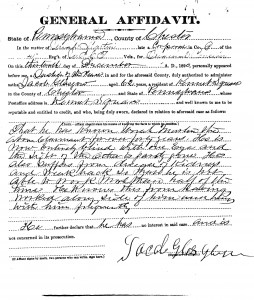
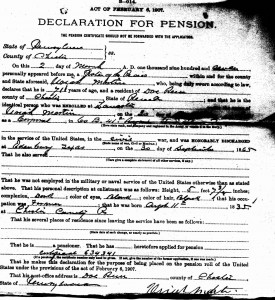
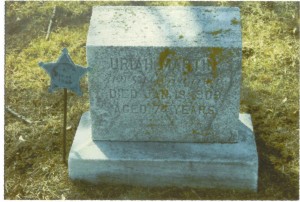

![Reblog this post [with Zemanta]](http://img.zemanta.com/reblog_e.png?x-id=b2bbbc19-97ba-4882-be37-8cef46ab64f9)
This is the fitting blog for anybody who wants to search out out about this topic. You notice so much its nearly arduous to argue with you (not that I really would need…HaHa). You undoubtedly put a brand new spin on a topic thats been written about for years. Nice stuff, simply great!
Everyone loves what you guys are up too. This type of clever work and reporting! Keep up the terrific works guys I’ve incorporated you guys to my blogroll.
Right now it appears like Expression Engine is the top blogging platform out there right now. (from what I’ve read) Is that what you are using on your blog?
I’d need to test with you here. Which is not one thing I usually do! I get pleasure from reading a submit that may make folks think. Additionally, thanks for allowing me to comment!
Pingback: Windows 8 Tablet
Pingback: forex system trading
Youre so cool! I dont suppose Ive read something like this before. So nice to search out someone with some authentic ideas on this subject. realy thanks for beginning this up. this web site is something that’s wanted on the web, someone with a little bit originality. useful job for bringing one thing new to the internet!
My grandaughter is the great grandaughter of Samuel London,who told me he was raised in the Welsh Mtns.I cannot get any info from any of the Londons,Toaltons or Butchers. They are definately of Native American descent and all have lived in parksburg,Coatesville for many years. She wants to know of her heritage.She wants to know what tribe she is descended from.I do not know why they are ashamed,or why it was not passed down.Some want to know.It is such a seceret.Can you help? We are going to a pow wow this year and she wants to know……We go there all the time and knew the Boots family……Laurie
I discovered you’re blog via Yahoo and I have to say. A Enormous Thank you, I thought that the post was incredibly enlightening I’ll revisit to see what further great information I can recieve here.
I have written three books on my ancestors, Notes and Documents of Free Persons of Color, Pieces of the Quilt the Mosaic of An African American Family, and Black Minqua The Life and Times of Henry Green. The first book, Notes and Documents of Free Persons of Color, details my ancestors who resided in Colonial Virginia. My family were Mulatto, mixed with European, Native, and African. My family lines go back to Breckonshire and Monmouth-shire Wales and beyond. Pieces of the Quilt traces the Pennsylvania line, also mixed raced and their historic contributions. In Black Minqua, my ancestry in Colonial Pennsylvania is outlined, including my Great-Great Grandfather, Henry Green, A Civil War Soldier who was arrested on 9/11/1851. He and other free blacks and whites in Lancaster County were arrested in the murder of a white slave owner. They were defended by non other than Thaddeus Stephens, on a charge of Treason. This is the part of history that is not being taught in schools. All three books are available through Amazon.com.
I’ve learn several excellent stuff here. Certainly price bookmarking for revisiting. I wonder how much effort you put to create this sort of excellent informative website.
Hello, as you can most likely tell by my last name, I’m writing as a descendant of William & Eliza Parker. They are my 3 times great grandparents. I’m about 45minute drive from Buxton and I visit there often. My aunt actually helped with a memorial in Eliza’s honour on Labour Day of last year, where a monument was put up with details of events and her role. My question to you is where you found your information and where can I find more? It’s not as easy as people think, I don’t have birthdays for either and my oldest relatives that knew any information have passed on not leaving much information behind. My great nana, Madeline Parker, passed away a few years ago at 101, I regret saying that I never asked her the questions I should have.
The National Buxton Historical Museum has some information but I’d like to dig a little deeper. I’m not sure if you were aware but las t summer TLC was running a program “Who Do You Think You Are” and Zooey Deschanel was on it who’s 4 times great grandmother was Sarah Pownall (pretty cool) and the show focused a lot on abolitionists and the Christiana Resistance/Riot. If you can point me and any sort of direction, I would definitely appreciate it! Thank you kindly, Erin.
Erin,
Thank you for contacting me, as Buxton is a place I want to visit someday. The information I found on my ancestors was in their pension records, census, and other vital records. Most of the time I felt like the ancestors were guiding me. I spent a lot of time looking through Archives and Records to find the information. The information i found was not known to our family, although they had general information. I had to look for the specific dates and reconstruct what was going on in order to write my books. I will be participating in a Walking Tour of the Welsh Mountains (in Lancaster County), this September. We are going back to the area where the Parker and Greens lived and have a tour, and other events. Please keep in touch!
Westtown Twp, Historical Commission is investigating a burial of one Jacob Martin in the Little Shiloh AME burying ground. He appears on the 1790,1800 and 1810 census records for Westtown. I’m told that your book, “Black Minquas,” is the source for belief that Jacob Martin was a Revolutionary War soldier. Another researcher has found a Jacob Martin in the Lancaster County Militia roster. Is there any information you can shed on Mr. Martin, his military service, etc. and his move to Westtown, Chester County?
I believe Jacob Martin is the father of my ancestor Charles Martin (b. about 1808 d. aft. 1870). Charles lived in the same area as Jacob and is the right age to be his son. Yet, I have not made a direct connection between the two. It is helpful to know where Jacob is buried because they may have information on who his children were. I apologize at not being able to give you more information. However, you can email me at ntawls@gmail.com if you want to communicate further.
The Martin’s lived in Lancaster and Chester County. My Great-Great Grandfather, Uriah Martin was in the Civil War out of Lancaster. After the Civil War, he moved to West Chester with his wife and children. It was the same with Charles Martin my Great-Great-Great Grandfather, who married Sarah Johnson. He was living in Chester County in 1830, but was in Lancaster County by 1850. He was living and working on a farm in Lancaster County until after 1860 when he moved back to Chester County. I am very interested in background information on Jacob Martin.
My great-grand-father was born in ky 1840 he was in the civil war.
His name was henry martin,he was in co i light artillery u.s.c.t.(union) A capt smith was is capt in that unit.My great grand father lived in Memphis TN
Can I simply just say what a relief to uncover someone
who really knows what they are discussing on the web. You definitely know how to bring an issue to light and make it important.
A lot more people have to look at this and understand this side of your story.
It’s surprising you aren’t more popular since you surely possess the gift.
I’d like to thank you for the efforts you’ve put in writing this
site. I am hoping to view the same high-grade blog posts by
you in the future as well. In fact, your creative writing abilities has inspired me to get my own website now
😉
I do enjoy the manner in which you have presented this issue plus it does present us a lot of fodder for consideration. Nonetheless, because of what precisely I have witnessed, I simply just wish as the actual feedback pack on that people remain on issue and in no way start upon a soap box of some other news of the day. Still, thank you for this fantastic point and whilst I do not necessarily go along with this in totality, I respect your point of view.
Greetings. In going through a cemetery in Grand Rapids, MI, I ran across a Civil War military headstone for Sergt. C.A. Pinkney, Co. D, 54th Mass. Inf. In doing an online search, I found your post here about an Alexander.
Is there any more you can share on Alexander? In looking further online, I see Alexander lived quite a life and I would like to verify whether this is the same man. Thank you for sharing this as I had never heard of this story.
I do not know much about Pinkney after the Civil War! He served in the 54th Massachusetts with my Great Uncle Walter Samuel Pinn and I have not researched individuals in the unit.
Thank you Anita. My wife and I will do more research. We found him buried not far from a section of Civil War soldiers and members of the G.A.R. Pinkney’s headstone is broken in half and we will order a new one from the VA to again properly mark his grave.
One question we are having is that the story of the Riot refers to him as Alexander and his headstone is S.C. Pinkney. His age at the time he entered the 54th Massachusetts is listed as 28. Depending on when he was born, if this is the same man–and we think it is–he would have been 16-years-old and married in 1851. Not saying it couldn’t have been, just trying to verify. Thank you for sharing these stories.
A major, major USCT (Civil War – Unites States Colored Troops) research tool has just been added to the Camp William Penn website (Database and Archive). Every USCT soldier of the Camp William Penn regiments has his own computer folder, 18,000 folders, 400,000 documents. Every soldier’s military file. Some of the soldier’s photo, death certificate, grave location, gravestone photo, stories, genealogy and more. A major new development in USCT genealogical and historical research.
United States Colored Troops (USCT) – Camp William Penn